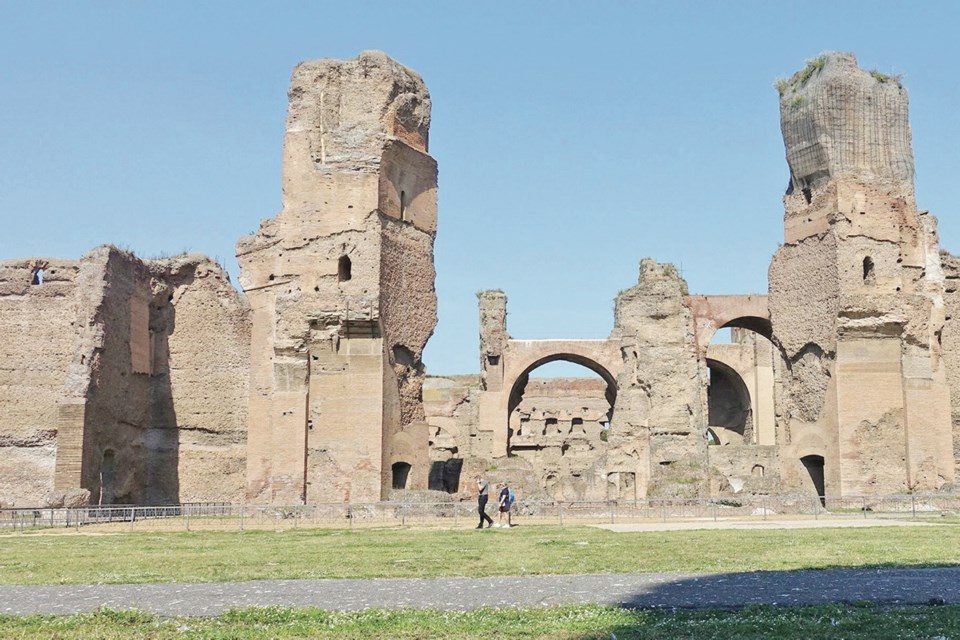Seeing the top sights in Europe’s big cities can be intense. Here you are in Paris, at last, just to find that it’s hot, it’s crowded, and that your dream of having a quiet moment with the Mona Lisa is shared by about six million people every year.
The mission of my most recent trip to Europe was to find peace and tranquillity in big cities that, in many ways, feel overrun with tourists. And it’s surprisingly easy to do.
Many travellers stick to the most famous sights — and I don’t blame them; everyone’s vacation time is limited, and the sights are famous for a reason. But cities such as Rome, Florence and Vienna have a number of attractions where you can enjoy an equally thrilling artistic encounter without the overwhelming crowds.
In Rome — the “Eternal City” — you can spend what feels like an eternity waiting in line with your fellow tourists at the most crowded spots. Fortunately, Rome has plenty of extremely rewarding sights that are cool, quiet and give an intimate peek at an amazing ancient world.
Most clamour to see the famed sites of ancient ruins, especially the Colosseum and Forum, and often neglect the treasures tucked indoors. The relatively empty National Museum of Rome, for example, houses the world’s greatest collection of ancient Roman art, including busts of emperors and one of the finest Roman copies of Classical Greece’s long-revered Discus Thrower statue. And just a few minutes’ walk from the Roman Forum, the Capitoline Museums hold more of ancient Rome’s most impressive art. Highlights include an equestrian statue of Emperor Marcus Aurelius, a famous representation of an ancient wounded warrior (the Dying Gaul), and a bronze statue depicting legendary she-wolf nursing Romulus and Remus, the infants who became the founders of Rome. But even in peak season, you might well find yourself alone with the wonders of the ancient world, wondering: “Where is everyone?”
A 10-minute stroll from Rome’s overcrowded Colosseum is a free-standing ruin of nearly equal vastness — the impressive Baths of Caracalla. This sight is dramatic, in part because nothing was built around or on top of it — and few people visit it. Today, if you bring a fertile imagination, it’s a wonderful place to picture Rome at its zenith.
The same goes for Florence, where visitors cram into the three most famous sights (the Accademia Gallery, Uffizi Gallery and Duomo), leaving other museums and galleries — which would be big hits in a lesser city — essentially empty.
On my last trip to Florence, I visited the Hospital of the Innocents, just a few minutes away from the mobbed Accademia, where Michelangelo’s David stands surrounded by adoring fans. Designed in the 15th century by Filippo Brunelleschi, and considered by many the first Renaissance building, the hospital typifies the new (at the time) esthetic of calm balance and symmetry. With its mission to care for orphans, the hospital was also an important symbol of the increasingly humanistic outlook of Renaissance Florence. Now a museum, it houses terra-cotta medallions by Luca della Robbia and other magnificent artwork. But on my last visit it was almost empty — I shared it only with a group of school children on a field trip.
Vienna is home to an outsize proportion of world-famous artworks, especially at the big-name Kunsthistorisches Museum and Belvedere Palace. But on each visit, I also like to make time for the much quieter Albertina Museum, which takes up a far-flung corner of the city centre’s extensive Hofburg Palace complex. This laid-back museum has a remarkable collection of minor works by major artists, including sketches, woodcuts and watercolours. As the exhibits rotate, at one time you might see Claude Monet’s water lilies and Edgar Degas’ dancers, at another time there might be Edvard Munch’s moody landscapes and Gustav Klimt’s eerie femme fatales. On a recent trip, I enjoyed quality time alone here with some of my favourite artists.
Even in St. Petersburg, where one blockbuster sight stands above them all — the world-famous Hermitage Museum — you can find peace in the massive museum’s Impressionist section, located in a building across the square from the main galleries.
With a staggering three million works of art housed in a series of mostly interconnected buildings, the Hermitage can be a zoo. But its incredible Impressionist (and Post-Impressionist) collection stands alone in the nearby General Staff Building. Most visitors head straight into the Winter Palace and wind their way through the adjoining palaces in a route that can become overwhelming. Savvy travellers buy their ticket at the Impressionist galleries (where it’s almost always less crowded), see this collection first, then head for the highlights in the main complex.
Great art often hides in less-famous sights. Throughout my travels, I have noticed that huge crowds don’t always gravitate to the most enjoyable locations. There are countless amazing places you can have all to yourself. If you do your homework, you’ll know about attractions where peace and elegance trump crowds and chaos.
Rick Steves writes European travel guidebooks and hosts travel shows on public television and public radio. Email him at [email protected] and follow his blog on Facebook.


